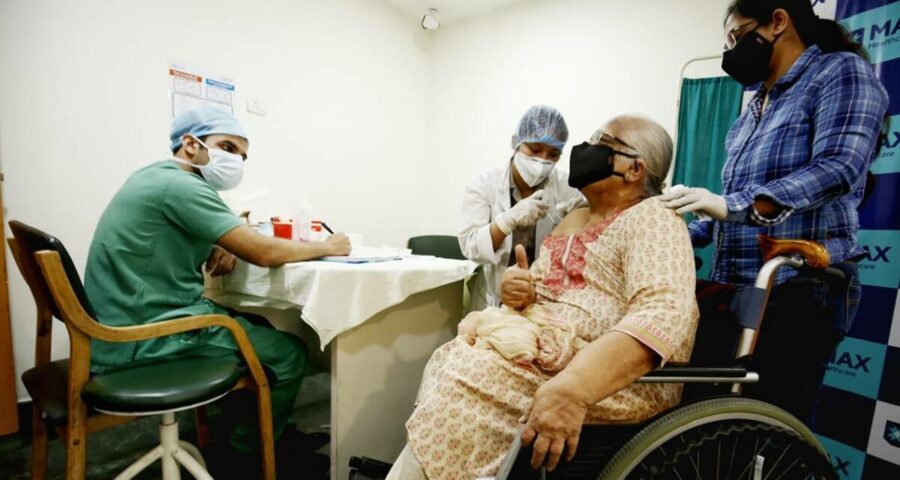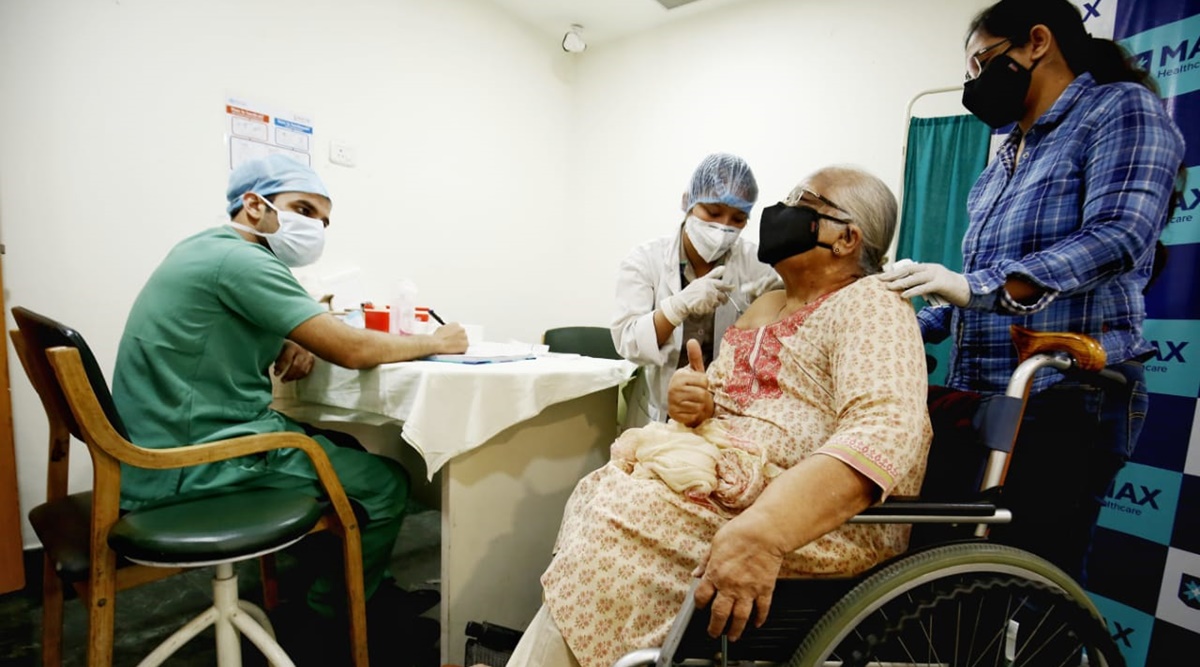States were specifically asked to continue with the effective strategy of 'test, track and treat' that had yielded rich dividends at the height of the pandemic, improve overall testing in districts reporting reduction in testing and increase share of RT-PCR tests in districts dependent on high levels of antigen testing.
The Centre has asked states and union territories witnessing surge in new COVID-19 cases and high active caseload to continue with the strategy of “test, track and treat” that had yielded rich dividends at the height of the pandemic and accelerate vaccination for priority population groups in districts reporting higher infections on mission mode.
In a meeting held on Saturday, they have been asked to collaborate with private hospitals to open up vaccination time-table for a minimum of 15 days and maximum of 28 days at a time.
They have been asked to increase the share of RT-PCR tests in districts dependent on high levels of antigen testing, refocus on surveillance and stringent containment of those areas in selected districts which are seeing cluster of cases and carry out an average close contact tracing of minimum of 20 persons per positive case.
Union Health Secretary Rajesh Bhushan and NITI Aayog Member (Health) Vinod K Paul on Saturday interacted with health secretaries and mission directors of the National Health Mission of Haryana, Andhra Pradesh, Odisha, Goa, Himachal Pradesh, Uttarakhand and the union territories of Delhi and Chandigarh, the Union Health Ministry said.
“These states and UTs have in the recent past seen increased positivity and increased number of daily positive cases,” it underlined.
They reviewed the ongoing public health measures of surveillance, containment and management of COVID cases in wake of the steep rise in daily new cases of COVID and the high number of active caseload being reported from these eight states and UTs, the ministry said in its statement.
In a detailed presentation, it was pointed out that nine districts in Delhi, 15 in Haryana, 10 in Andhra Pradesh, 10 in Odisha, nine in Himachal Pradesh, seven in Uttarakhand, two in Goa, one in Chandigarh continue to be of concern as these districts are seeing a decrease in total tests being conducted, low share of RT-PCR tests, increase in weekly positivity and low number of contact tracing of the COVID positive cases.
These together can pose high risk of transmission to the neighbouring states and UTs. A granular analysis of the COVID-19 response in the districts was shared with the states and UTs for further action, the statement said.
States were specifically asked to continue with the effective strategy of ‘test, track and treat’ that had yielded rich dividends at the height of the pandemic, improve overall testing in districts reporting reduction in testing and increase share of RT-PCR tests in districts dependent on high levels of antigen testing.
They have been asked to refocus on surveillance and stringent containment of those areas in selected districts which are seeing cluster of cases, carry out an average close contact tracing of minimum of 20 persons per positive case and focus on clinical management in districts reporting higher deaths, the ministry in the statement.
They have been asked to actuate their health infrastructure to provide effective clinical management to all the patients as a surge in cases also affects the case fatality rate in those districts.
“Accelerate vaccination for priority population groups in districts reporting higher cases. Make optimal use of the available vaccine doses and focus on critical districts,” the ministry said.
They have been asked to collaborate with the private hospitals to open up vaccination time-table for a minimum of 15 days and maximum of 28 days at a time and promote COVID-appropriate behaviour through communication and enforcement, the statement said.
“Stress was laid on prompt isolation and on medical supervision of those active cases presently in home isolation for early identification of progressive deterioration of the disease. The states were also asked to actively watch out for super-spreading events and share their best practices in breaking the chain of transmission,” the statement stated.
Source: Read Full Article


